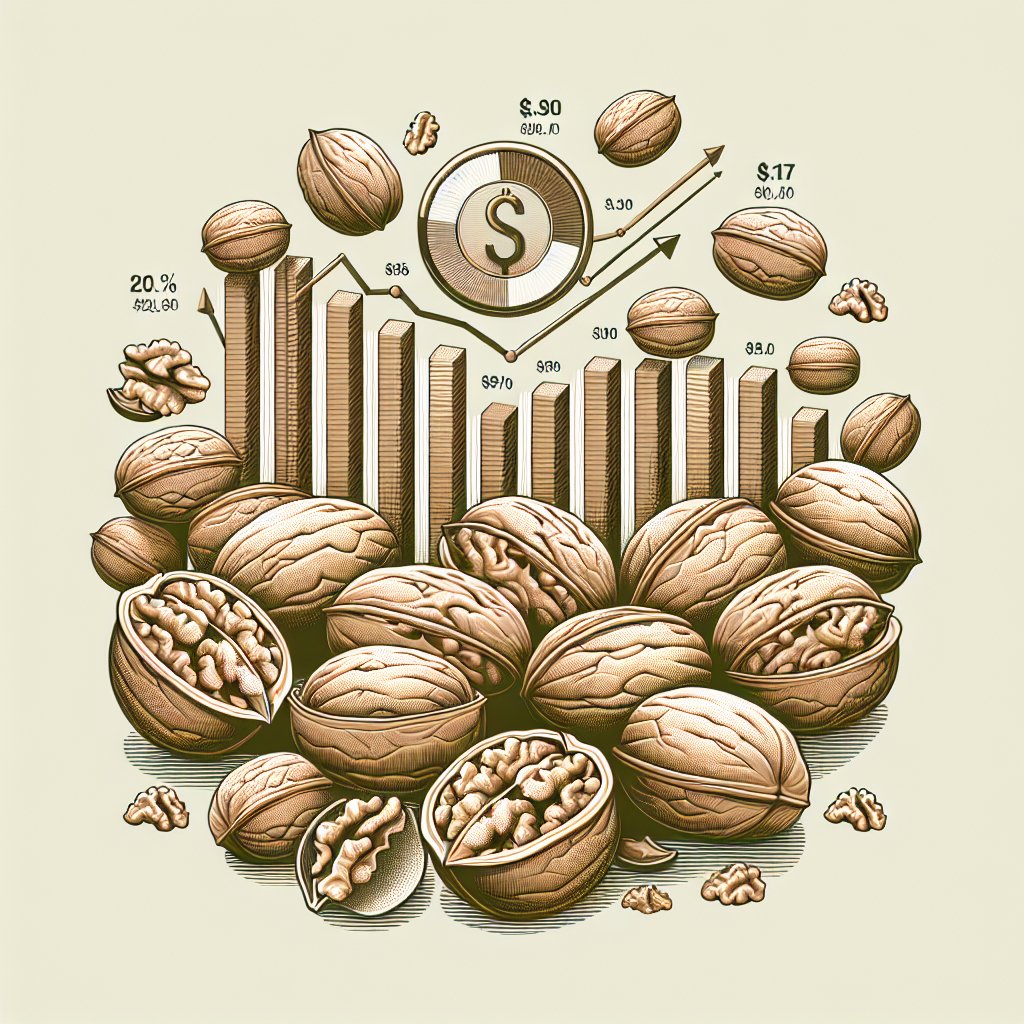The prices of nuts on global markets have become a significant topic of discussion among agricultural economists, traders, and consumers alike. As the demand for healthy snacks continues to rise, understanding the trends in nut prices is essential for stakeholders in the agricultural sector. This article delves into the factors influencing nut prices, the current market trends, and the implications for producers and consumers around the world.
Factors Influencing Nut Prices
Several factors contribute to the fluctuations in nut prices on the global market. These factors can be broadly categorized into supply-side and demand-side influences, each playing a crucial role in determining the market dynamics.
Supply-Side Factors
Supply-side factors refer to the elements that affect the production and availability of nuts. Key aspects include:
- Climate Conditions: Nuts are sensitive to climate variations. Droughts, excessive rainfall, and temperature fluctuations can significantly impact crop yields. For instance, almond production in California has been affected by prolonged droughts, leading to reduced supply and increased prices.
- Pest and Disease Management: The presence of pests and diseases can devastate nut crops. Effective management practices are essential to maintain healthy yields. For example, the spread of the bacterial blight in walnut orchards has raised concerns about future production levels.
- Labor Costs: The agricultural sector often relies on seasonal labor for harvesting nuts. Rising labor costs can lead to increased production expenses, which may be passed on to consumers in the form of higher prices.
- Technological Advancements: Innovations in agricultural technology can enhance productivity and reduce costs. The adoption of precision agriculture techniques has allowed some producers to optimize their yields, potentially stabilizing prices.
Demand-Side Factors
On the demand side, several trends are influencing nut prices:
- Health Trends: The growing awareness of health benefits associated with nuts, such as their high protein and healthy fat content, has led to increased consumer demand. This trend is particularly strong in developed markets where health-conscious consumers are willing to pay a premium for quality products.
- Globalization of Diets: As diets become more globalized, nuts are increasingly incorporated into various cuisines. This has expanded the market for nuts beyond traditional consumers, driving up demand.
- Snack Food Industry Growth: The rise of the snack food industry, particularly in urban areas, has led to a surge in nut consumption. Nuts are often marketed as convenient, healthy snacks, further boosting their popularity.
- Export Markets: Countries like the United States, Australia, and Turkey are major exporters of nuts. Changes in trade policies, tariffs, and international relations can impact export volumes and prices.
Current Market Trends
Analyzing the current market trends provides insight into the future of nut prices. Recent data indicates several key trends that are shaping the nut market.
Price Fluctuations
Nut prices have experienced significant fluctuations in recent years. For instance, almond prices have seen a sharp increase due to reduced harvests in California, which produces over 80% of the world’s almonds. In contrast, walnut prices have remained relatively stable, thanks to consistent production levels in key growing regions.
Regional Variations
Regional variations in nut prices are also noteworthy. For example, the price of cashews has been affected by production issues in West Africa, where adverse weather conditions have led to lower yields. Conversely, the price of pistachios has remained high due to strong demand from markets in Asia, particularly China.
Market Predictions
Looking ahead, market predictions suggest that nut prices will continue to be influenced by both supply and demand factors. Analysts predict that as health trends persist and global demand for nuts increases, prices may rise further. However, advancements in agricultural practices and potential increases in production could help stabilize prices in the long term.
Implications for Producers and Consumers
The trends in nut prices have significant implications for both producers and consumers. Understanding these implications is crucial for making informed decisions in the agricultural market.
For Producers
Producers must adapt to the changing market dynamics to remain competitive. Key strategies include:
- Diversification: Producers may consider diversifying their crops to mitigate risks associated with price fluctuations. Growing a variety of nuts can help stabilize income and reduce dependency on a single crop.
- Investment in Technology: Investing in technology can enhance productivity and reduce costs. Precision agriculture tools can help producers monitor crop health and optimize resource use.
- Market Research: Staying informed about market trends and consumer preferences is essential. Producers should conduct regular market research to identify emerging opportunities and adjust their production strategies accordingly.
For Consumers
Consumers also face implications from the changing nut prices:
- Budgeting for Purchases: As nut prices rise, consumers may need to adjust their budgets. Being aware of price trends can help consumers make informed purchasing decisions.
- Exploring Alternatives: Consumers may consider exploring alternative snacks or different types of nuts that may be more affordable. For instance, peanuts and sunflower seeds are often less expensive than almonds or cashews.
- Supporting Local Producers: Consumers can support local nut producers by purchasing locally sourced products. This not only helps the local economy but may also provide fresher options.
Conclusion
The analysis of nut prices on global markets reveals a complex interplay of supply and demand factors that influence market trends. As the demand for nuts continues to grow, producers and consumers must navigate the challenges and opportunities presented by fluctuating prices. By understanding the underlying factors and staying informed about market trends, stakeholders can make strategic decisions that benefit both the agricultural sector and consumers alike.




